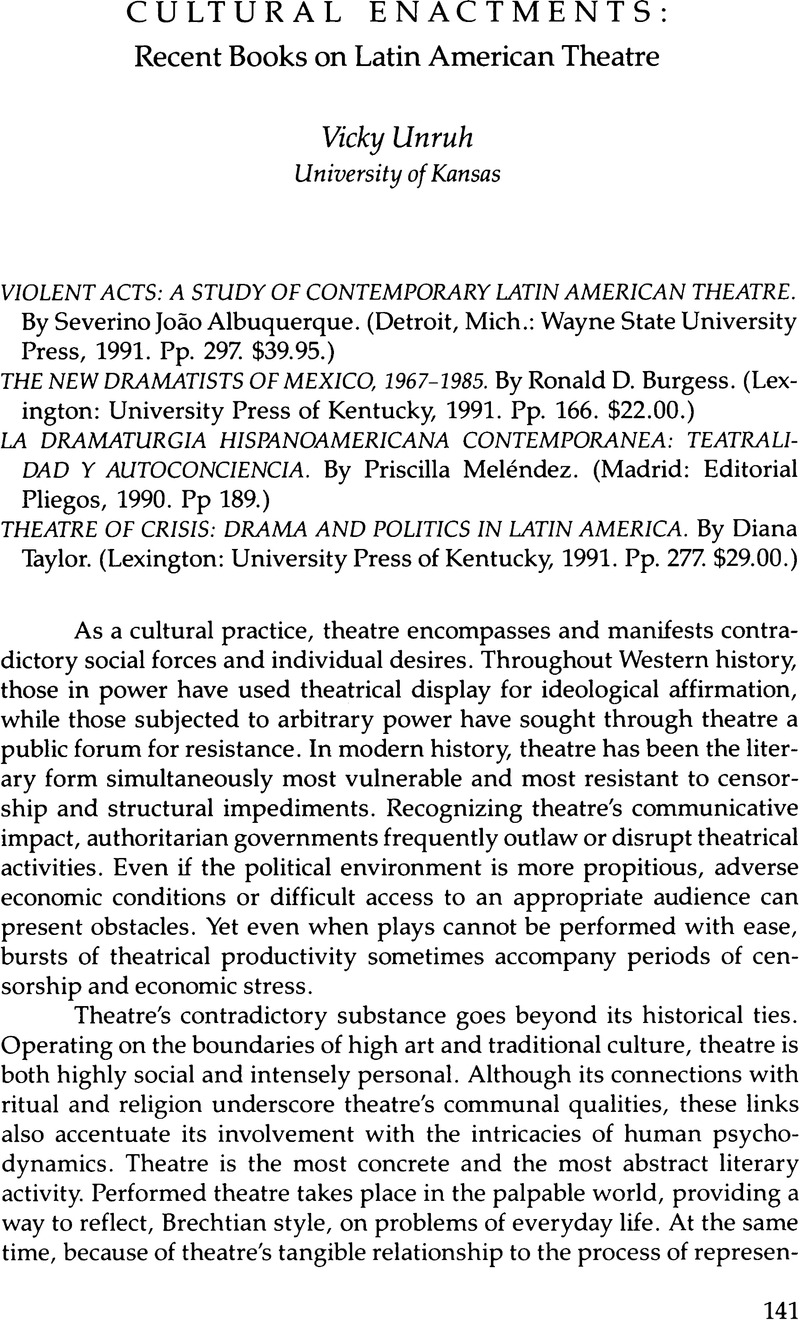No CrossRef data available.
Published online by Cambridge University Press: 12 October 2022

1. For detailed discussions of theatrical “liminality,” see Victor Turner's “Frame, Flow, and Reflection: Ritual and Drama as Public Liminality” in Performance in Postmodern Culture, edited by Michel Benamou and Charles Caramello (Milwaukee, Wis.: Center for Twentieth-Century Studies, 1977), 33–55; From Ritual to Theatre: The Human Seriousness of Play (New York: Performing Arts Journal Publications, 1982); and The Anthropology of Performance (New York: Performing Arts Journal Publications, 1986).
2. Contemporary theorists who have used Artaud's ideas on theatre as a point of departure include Jacques Derrida and Herbert Blau. See Derrida, “The Theater of Cruelty and the Closure of Representation,” Writing and Difference, edited by Alan Bass (Chicago, Ill.: University of Chicago Press, 1978), 232–50; Blau, Blooded Thought: Occasions of Theatre (New York: Performing Arts Journal Publications, 1982); and Blau, The Eye of Prey: Subversions of the Postmodern (Bloomington: Indiana University Press, 1987).
3. Drawing on Keir Elam's distinction in The Semiotics of Theatre and Drama between the “written text” and the “performance text,” Meléndez employs the Spanish term receptor (recipient or receiver in English) to embrace two categories: that of “reader” as well as that of “spectator.”
4. The Body in Pain: The Making and Unmaking of the World (New York and Oxford: Oxford University Press, 1985).